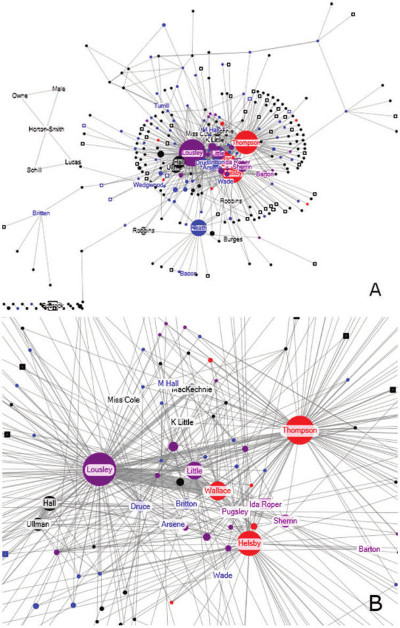Les spécimens d’herbier révèlent un réseau
ANGLAIS – Herbarium specimens reveal the exchange network of British and Irish botanists, 1856-1932.
Résumé :
The labels on herbarium specimens hold information on the plant collected, but also on the botanist. Recent digitisation allows these data to be used for many types of investigation, including study of the botanists themselves. As a proof of concept, we reconstructed prosopographical networks of botanical exchange that existed in Britain and Ireland in the nineteenth and twentieth century and investigate the nature of these networks and their actors. Data from British Herbaria digitised on Herbaria@home were used to create network diagrams from the names of collectors, determiners, communicators and curators mentioned on herbarium specimens collected from 1856 to 1932. Data from herbarium specimens credibly reconstructed botanical exchange networks. These networks provided metrics on the actors in botanical exchange and can be used to quantify the role of different categories of actor. The botanical networks of the late nineteenth and early twentieth century were shown to be highly connected and despite the existence of two exchange clubs during part of this period the network was not divided. Herbarium specimens are a useful resource for botanical scientometrics; revealing scientific links between botanists that are not visible in correspondence, citation and co-authorship networks. Further digitisation of herbarium specimens coupled with openness of the data will further facilitate our understanding of how botanists work.

Lire l’article de Q. J. Groom, C. O’Reilly, T. Humphrey (1: Botanic Garden Meise, Belgium, 2: Railway Cottages, Northumberland, UK, 3: Botanical Society of Britain and Ireland, Wallingford, UK) dans New Journal of Botany, Volume 4, Issue 2 (August 2014), pp. 95-103. DOI: http://dx.doi.org/10.1179/2042349714Y.0000000041
———
Image d’illustration : partie de la Figure 2. Exemple du réseau d’échanges.